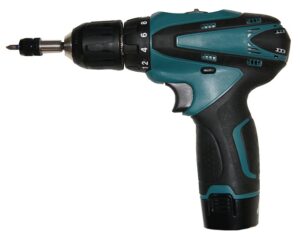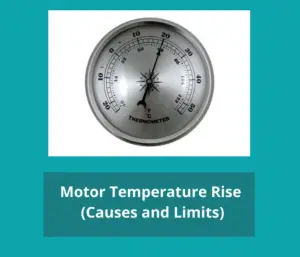Ambient temperature, or the temperature of the surrounding environment, can have a significant impact on the performance and lifespan of electric motors.
Whether you’re dealing with small appliances or large industrial machines, understanding how temperature affects motors is crucial to ensuring their proper operation and maintenance.
In this article, we’ll explore the different ways in which ambient temperature affects electric motors, and what steps you can take to mitigate the effects of temperature on your motor.
Table of Contents
Effects of High Ambient Temperature on Motors
High ambient temperature can cause several issues in electric motors, including:
- Reduced Motor Lifespan: When a motor operates in a high-temperature environment, the insulation materials inside the motor can break down more quickly. Over time, this can lead to insulation failure and short-circuits, which can cause the motor to fail prematurely.
- Reduced Efficiency: As the temperature of the motor increases, its efficiency decreases. This means that the motor requires more energy to perform the same amount of work, which can lead to increased energy costs and decreased productivity.
- Overheating: Motors that operate in high-temperature environments are more likely to overheat. Overheating can cause damage to the motor’s windings, bearings, and other components, leading to motor failure.
- Increased Wear and Tear: High temperatures can cause the lubricants inside the motor to break down more quickly, leading to increased wear and tear on the motor’s components. This can lead to increased maintenance costs and downtime.
Effects of Low Ambient Temperature on Motors
Low ambient temperature can also cause several issues in electric motors, including:
- Reduced Motor Lifespan: Motors that operate in low-temperature environments may experience reduced lubrication, which can cause increased wear and tear on the motor’s components. This can lead to premature failure of the motor.
- Reduced Efficiency: As the temperature of the motor decreases, its efficiency also decreases. This means that the motor requires more energy to perform the same amount of work, which can lead to increased energy costs and decreased productivity.
- Bearing Failure: Low temperatures can cause the lubricants inside the motor’s bearings to thicken, making it more difficult for the bearings to rotate. This can cause increased wear and tear on the bearings, leading to bearing failure.
- Condensation: Low temperatures can cause condensation to form inside the motor, which can cause corrosion and other damage to the motor’s components.
Steps to Mitigate the Effects of Ambient Temperature on Motors
To mitigate the effects of ambient temperature on motors, you can take several steps, including:
- Regular Maintenance: Regular maintenance can help ensure that the motor’s components are in good condition and that any issues are identified and addressed before they become more significant problems.
- Proper Lubrication: Proper lubrication can help reduce wear and tear on the motor’s components, reducing the risk of premature failure.
- Temperature Monitoring: Temperature monitoring can help you identify when the motor is operating outside of its recommended temperature range, allowing you to take corrective action before any damage occurs.
- Insulation Upgrades: Upgrading the insulation materials in the motor can help improve the motor’s ability to operate in high-temperature environments, reducing the risk of insulation failure.
- Proper Ventilation: Proper ventilation can help dissipate heat generated by the motor, reducing the risk of overheating.
Conclusion
In conclusion, ambient temperature can have a significant impact on the performance and lifespan of electric motors. High temperatures can cause insulation failure, reduced efficiency, overheating, and increased wear and tear, while low temperatures can cause premature failure, reduced efficiency, bearing failure, and condensation.
By taking steps such as regular maintenance, proper lubrication, temperature monitoring, insulation upgrades, and proper ventilation, you can mitigate the effects of ambient temperature on your motor, improving its performance and lifespan.
It’s important to remember that different types of motors have different recommended temperature ranges, so it’s essential to consult the manufacturer’s specifications to ensure that your motor is operating within the recommended temperature range.
By understanding how ambient temperature affects your motor and taking appropriate measures to mitigate those effects, you can ensure that your motor operates efficiently and reliably, reducing the risk of downtime and costly repairs.
Don’t Leave Empty-Handed!
Install my Free Android App on Google Play:
Electrical Cables Most Common Tables “Cables Tables”
And, my Electrical Calculations App “Fast Electrical Calculator”
Discover more great content by subscribing to My channel
Looking to stay ahead of the game in the world of electrical engineering? Subscribe to my YouTube channel and gain access to exclusive content you won’t find anywhere else!
The staff I recommend
(Amazon Affiliate Links to products I believe are high quality):
- Economy 120 Volt/60Hz AC Power Source – Step-Down Voltage & Frequency Converters 1800W
- UNI-T Digital Multimeter Tester UT139C
- 50-Amp Extension Cord for RV “100ft”
- Voltage Stabilizer 110/220v
- Hair Dryer “best selling“
- TOSHIBA EM131A5C-BS Countertop Microwave Ovens
Disclaimer: This contains affiliate links to Amazon products. I may earn a commission for purchases made through these links.


